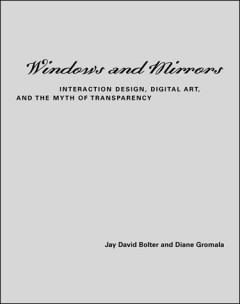Filter by

The future was here :the Commodore Amiga
Exploring the often-overlooked history and technological innovations of the world's first true multimedia computer. Long ago, in 1985, personal computers came in two general categories: the friendly, childish game machine used for fun (exemplified by Atari and Commodore products); and the boring, beige adult box used for business (exemplified by products from IBM). The game machines became f…
- Edition
- -
- ISBN/ISSN
- 9780262301510
- Collation
- 1 online resource (xii, 328 pages) :illustrations.
- Series Title
- -
- Call Number
- -

https://direct.mit.edu/books/book/2413/Windows-and-MirrorsInteraction-Design-…
The experience of digital art and how it is relevant to information technology.In Windows and Mirrors: Interaction Design, Digital Art, and the Myth of Transparency, Jay David Bolter and Diane Gromala argue that, contrary to Donald Norman's famous dictum, we do not always want our computers to be invisible "information appliances." They say that a computer does not feel like a toaster or a vacu…
- Edition
- -
- ISBN/ISSN
- 9780262268998
- Collation
- 1 online resource (xi, 182 pages) :illustrations.
- Series Title
- -
- Call Number
- -

Snap to grid :a user's guide to digital arts, media, and cultures
"In Snap to Grid, an idiosyncratic guide to the interactive, telematic era, Peter Lunenfeld maps out the trajectories that digital technologies have traced upon our cultural imaginary. His evaluation of new media includes an impassioned discussion - informed by the discourses of technology, aesthetics, and cultural theory - of the digital artists, designers, and makers who matter most. "Snap to…
- Edition
- -
- ISBN/ISSN
- 058528850X
- Collation
- 1 online resource (xxv, 226 pages) :illustrations
- Series Title
- -
- Call Number
- -
 Computer Science, Information & General Works
Computer Science, Information & General Works  Philosophy & Psychology
Philosophy & Psychology  Religion
Religion  Social Sciences
Social Sciences  Language
Language  Pure Science
Pure Science  Applied Sciences
Applied Sciences  Art & Recreation
Art & Recreation  Literature
Literature  History & Geography
History & Geography